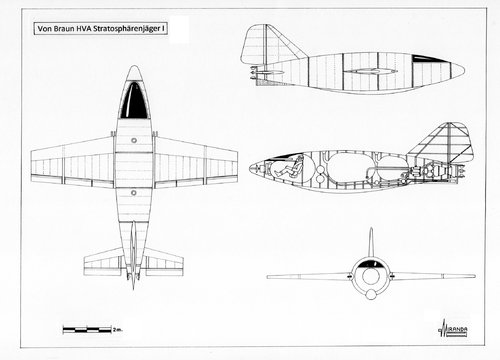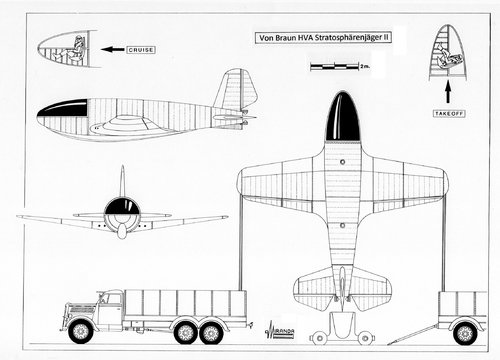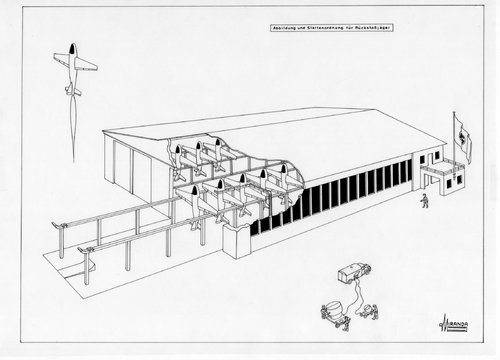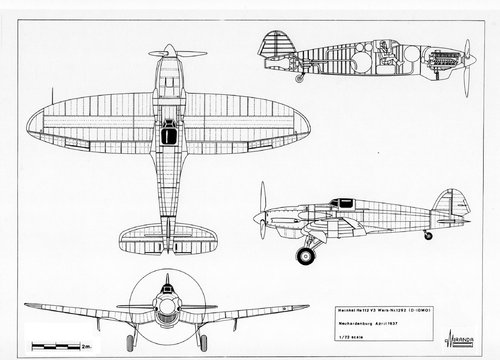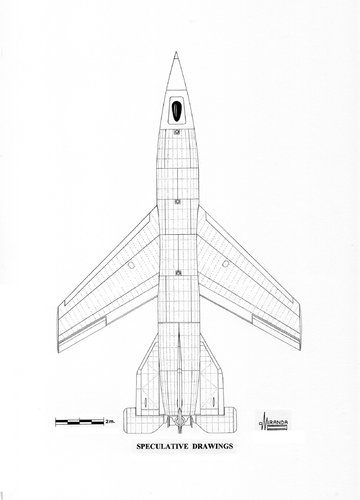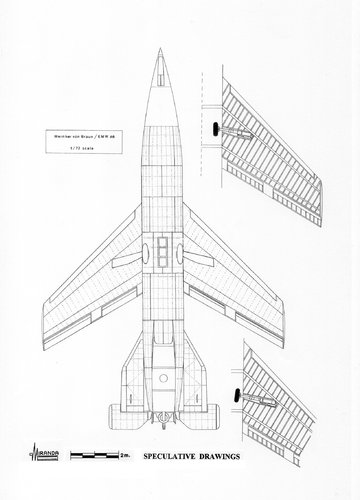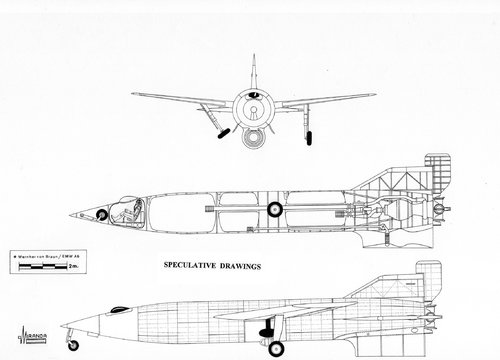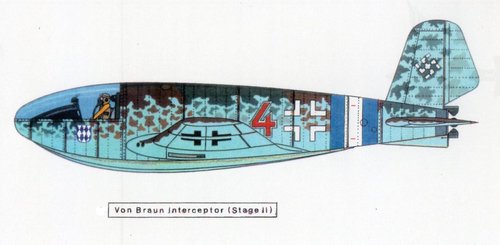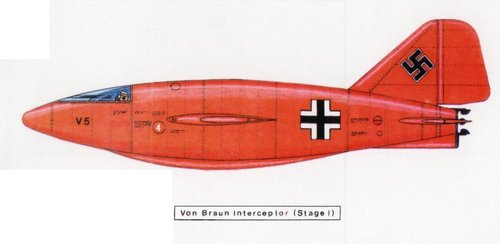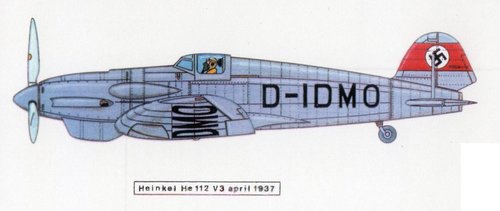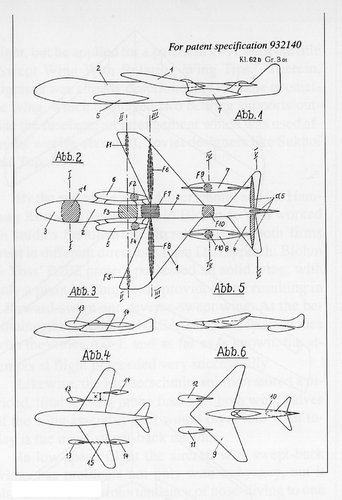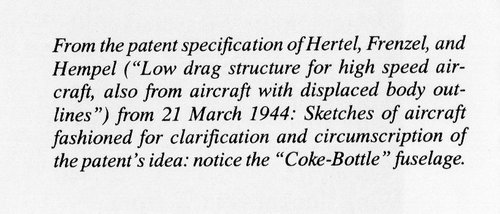You are using an out of date browser. It may not display this or other websites correctly.
You should upgrade or use an alternative browser.
You should upgrade or use an alternative browser.
Von Braun Rocket Planes
- Thread starter Justo Miranda
- Start date
- Joined
- 18 March 2013
- Messages
- 978
- Reaction score
- 2,859
I think I contacted Mr. Miranda a few decades ago when he was doing a series of 'specialized' comics (graphic novels?). At that time -- and I hope I have not mistaken him for someone else -- he was a mover and shaker of the Luft46 movement.
These apparent refinements of that work so tempt me to attempt to model some of these fictional, though plausible, vehicles. Beautiful work on display here.
David
These apparent refinements of that work so tempt me to attempt to model some of these fictional, though plausible, vehicles. Beautiful work on display here.
David
- Joined
- 18 March 2013
- Messages
- 978
- Reaction score
- 2,859
The rocket that is fifth from the right has the 'coke bottle' fuselage.
No. The fuselage is a simple cylinder. What you see in the top plan view is the projected outline of the wings root foil section intersecting the fuselage. Note that the wing intersects the fuselage above center line -- that's why you don't see this apparent 'pinching' on the bottom plan view.
The supersonic 'coke bottle' trick was not worked out till a few decades later (probably by former German engineers in the employ of the US I would bet a buck or two).
These are orthographic projections, suitable for direct measurement lofting. When properly interpreted, an accurate model can be made. Tempting!
What do you think, Scott?
David
I think I contacted Mr. Miranda a few decades ago when he was doing a series of 'specialized' comics (graphic novels?). At that time -- and I hope I have not mistaken him for someone else -- he was a mover and shaker of the Luft46 movement.
These apparent refinements of that work so tempt me to attempt to model some of these fictional, though plausible, vehicles. Beautiful work on display here.
David
Is the optical effect of the shoulder wing.The rocket that is fifth from the right has the 'coke bottle' fuselage.
The supersonic 'coke bottle' trick was not worked out till a few decades later (probably by former German engineers in the employ of the US I would bet a buck or two).
What do you think, Scott?
From that fount of all knowledge, wikipedia:
The area rule was discovered by Otto Frenzl when comparing a swept wing with a w-wing with extreme high wave drag[3] while working on a transonic wind tunnel at Junkers works in Germany between 1943 and 1945. He wrote a description on 17 December 1943, with the title Anordnung von Verdrängungskörpern beim Hochgeschwindigkeitsflug ("Arrangement of Displacement Bodies in High-Speed Flight"); this was used in a patent filed in 1944.
...
Wallace D. Hayes, a pioneer of supersonic flight, developed the transonic area rule in publications beginning in 1947 with his Ph.D. thesis at the California Institute of Technology.[6]
Richard T. Whitcomb, after whom the rule is named, independently discovered this rule in 1952, while working at the NACA.
Area ruling had many discovers. As anyone who isn't a Columbus-statue-toppling moron knows, multiple people can independently discover something that someone already discovered.
As for a model of the manned, winged ramjet-equipped A-4... I released a resin kit in 1/72 something along the lines of 20 years ago. Oddly, the internet seems to have forgotten that one as I couldn't immediately find any references to it. Shrug. It weren't that good.
Last edited:
- Joined
- 18 March 2013
- Messages
- 978
- Reaction score
- 2,859
If anyone could chronicle the genesis of the area-rule, it would be you. Success has many fathers. Failure will always be the red-headed bastard step-child.
Lets re-visit the A-4 'recon' manned rocket in a bigger scale with GRP wings and fuselage!
David
Lets re-visit the A-4 'recon' manned rocket in a bigger scale with GRP wings and fuselage!
David
- Joined
- 11 March 2012
- Messages
- 3,016
- Reaction score
- 2,698
Area-rule history is outlined in the wikipedia article.
The first mention is about a Nazi German engineer named Otto Frentzl in 1943. Theodor Zobel first mentioned area-rule in public
Various other Nazi-surplus engineers worked on area-rule when they moved to the USA after WW2 (Operation Paperclip): Dietrich Kuchemann, Adolf Busemann, etc.
Post WW2, American engineers Wallace D. Hayes and Richard T. Witcomb finally applied area-rule to the disappointing Convari F-102 Delta Dart. By re-contouring the fuselage into a "Kuchemann coke bottle"they able to reduce drag enough to achieve supersonic performance objectives. The improved Convair F-106 Delta Dagger first flew in 1956.
Early area-ruled airplanes often looked crude, with bulbous add-ons (e.g. Convair 880's Kuchemann carrots, bulbous rear fuselage in Buccaneer, lower aft fuel tank on EE Lightning).
Witcomb later went on to develop super-critical wings for trans-sonic airliners. While modern airliners may not immediately look like coke-bottle (from the side or top) they employ complex curvatures in wing root fillets, engine nacelles and aft fuselage profiles to smooth airflow at trans-sonic speeds. Please note that while airliners cruising at Mach 0.9 might not officially be trans-sonic, localized airflow might be. Witcomb's supercritical wings even out airflow to avoid localized super-sonic flow.
Modern fabrication methods are CAD design make area-ruling less obvious. For example, the Honda Jet uses a bulbous nose, quickly tapering under the fuselage before wings, then engines hang above the trailing edge .... all smoothing transitions in total airframe cross-section (area rule).
Trans-sonic airflow is a frightfully complex subject only vaguely related to sub-sonic, Newtonian physics. At one point, Witcomb realized that he was dealing with rigid, inflexible, "steel pipes" of super-sonic air that were difficult to bend around conventionally curved airframes. He jokingly described supersonic aerodynamicists as "pipe-fitters."
The first mention is about a Nazi German engineer named Otto Frentzl in 1943. Theodor Zobel first mentioned area-rule in public
Various other Nazi-surplus engineers worked on area-rule when they moved to the USA after WW2 (Operation Paperclip): Dietrich Kuchemann, Adolf Busemann, etc.
Post WW2, American engineers Wallace D. Hayes and Richard T. Witcomb finally applied area-rule to the disappointing Convari F-102 Delta Dart. By re-contouring the fuselage into a "Kuchemann coke bottle"they able to reduce drag enough to achieve supersonic performance objectives. The improved Convair F-106 Delta Dagger first flew in 1956.
Early area-ruled airplanes often looked crude, with bulbous add-ons (e.g. Convair 880's Kuchemann carrots, bulbous rear fuselage in Buccaneer, lower aft fuel tank on EE Lightning).
Witcomb later went on to develop super-critical wings for trans-sonic airliners. While modern airliners may not immediately look like coke-bottle (from the side or top) they employ complex curvatures in wing root fillets, engine nacelles and aft fuselage profiles to smooth airflow at trans-sonic speeds. Please note that while airliners cruising at Mach 0.9 might not officially be trans-sonic, localized airflow might be. Witcomb's supercritical wings even out airflow to avoid localized super-sonic flow.
Modern fabrication methods are CAD design make area-ruling less obvious. For example, the Honda Jet uses a bulbous nose, quickly tapering under the fuselage before wings, then engines hang above the trailing edge .... all smoothing transitions in total airframe cross-section (area rule).
Trans-sonic airflow is a frightfully complex subject only vaguely related to sub-sonic, Newtonian physics. At one point, Witcomb realized that he was dealing with rigid, inflexible, "steel pipes" of super-sonic air that were difficult to bend around conventionally curved airframes. He jokingly described supersonic aerodynamicists as "pipe-fitters."
Similar threads
-
-
von Braun retriever rocket
- Started by Justo Miranda
- Replies: 6
-
-
-

